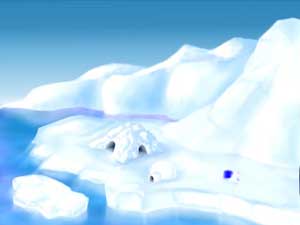Small amounts of salt and dust trapped in Antarctic ice over the past 740,000 years have revealed new signs of Earth’s climate changes.
These findings were published in the journal Nature by a research team.
 |
| Antarctic Icebergs. (Illustrative image from an international website) |
The researchers extracted a 3 km long ice core from Dome C, a peak located on the East Antarctic Plateau. This study represents a continuous climate research record from the furthest point in the past obtained through ice core analysis to date.
Since reporting in 2004 that Earth has experienced eight cycles of climate change (each cycle consisting of a glacial period followed by a warming period), the research team has analyzed the chemical impurities within the ice core to clarify how Earth’s climate has changed over the past 740,000 years.
By measuring changes in salt concentrations within the ice core, the team could estimate how far Antarctic ice sheets expanded during each cold spell.
The salt originates from seawater on the surface of newly formed ice (frozen seawater). The white icebergs cover the ocean, causing the Earth to reflect more sunlight.
The small dust particles are carried by winds from surrounding continents. Most of them were found in the ice core from the glacial period. From these observations, the research team concluded that the nearest continent, to the south of South America, was drier and windier. This dust could provide nutrients to the ocean, helping bacteria absorb CO2 from the atmosphere. From the different impacts of salt and dust, researchers suggest that during each warming period following a glacial phase, the South American region will change first, followed by the expansion of icebergs on the ocean surface.
The head of the research, Dr. Eric Wolff, who works at the British Antarctic Survey, stated, “Our research shows that over the past 740,000 years, every time a glacial phase gives way to a warmer phase, similar changes occur in the same order. We conclude that Earth follows a pattern of climate change, and if we can understand this pattern, we can improve climate models and make more accurate predictions for the future.”
The drilling of the ice core at Dome C is part of the European Project for Ice Coring in Antarctica (EPICA). The research team at Dome C faced extreme temperatures in summer, dropping below -40ºC in a remote drilling area thousands of kilometers from the nearest research station. The ice drilling was completed in December 2004 after reaching a depth of 3,260 meters of ice.


















































